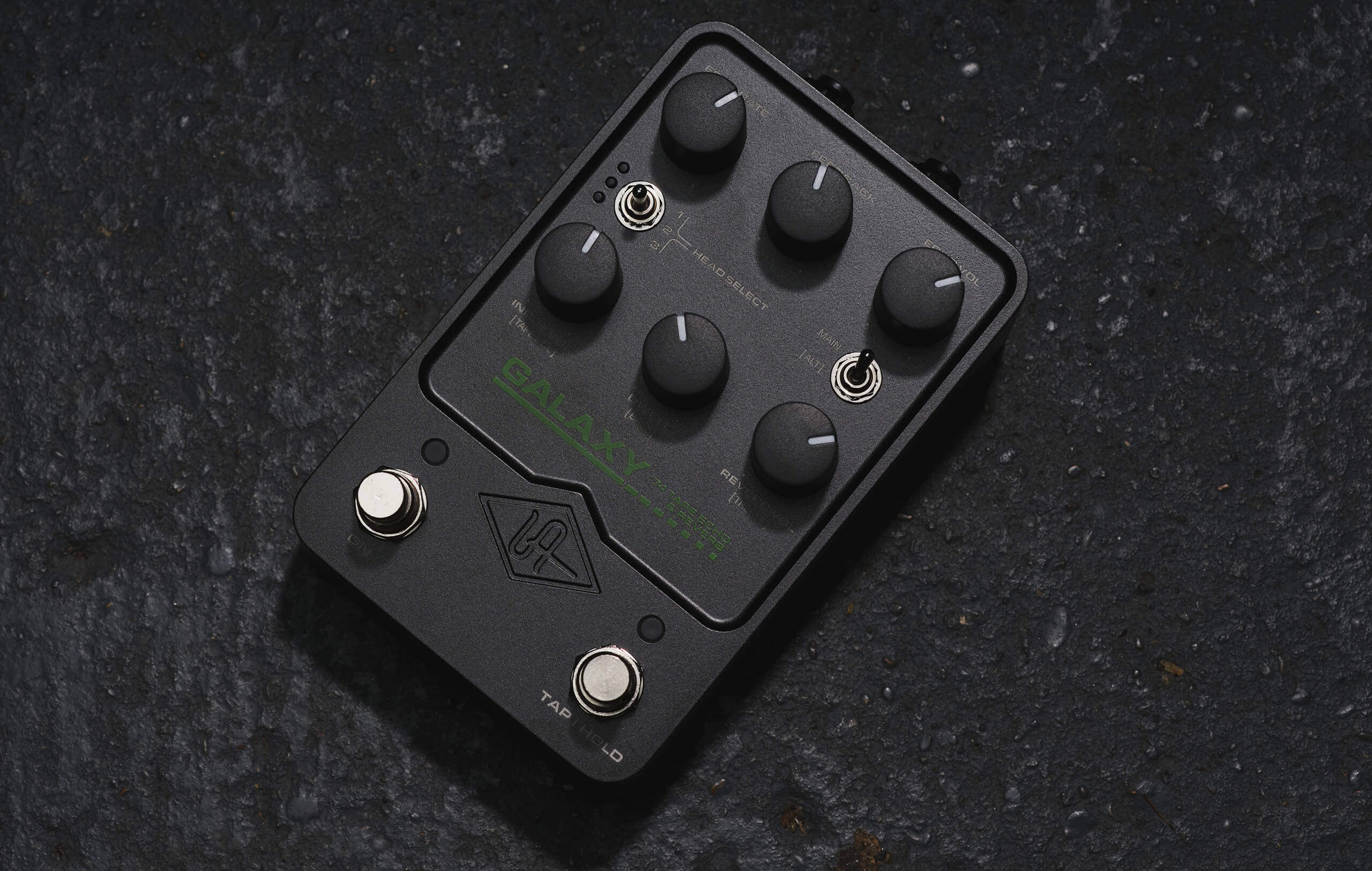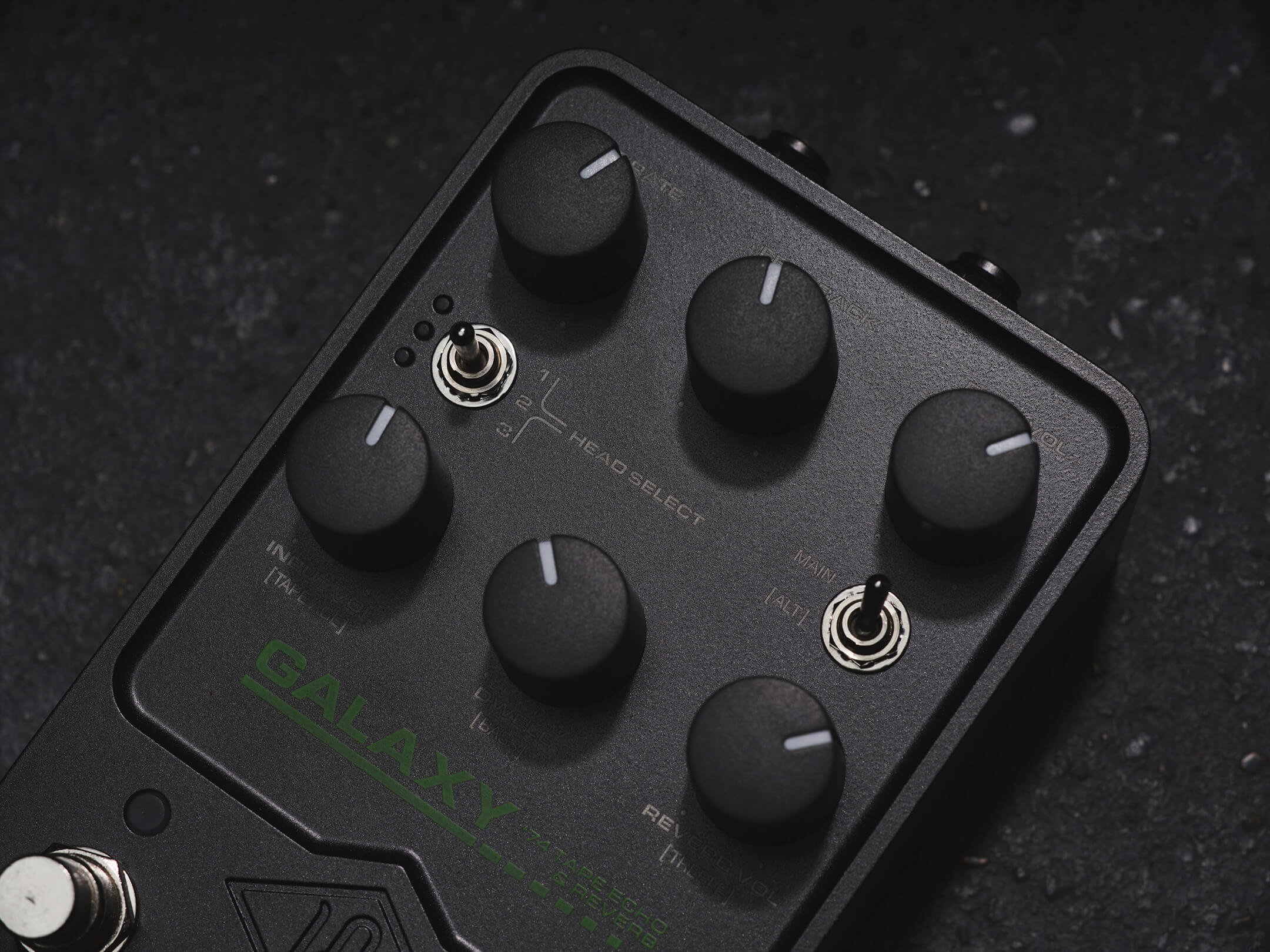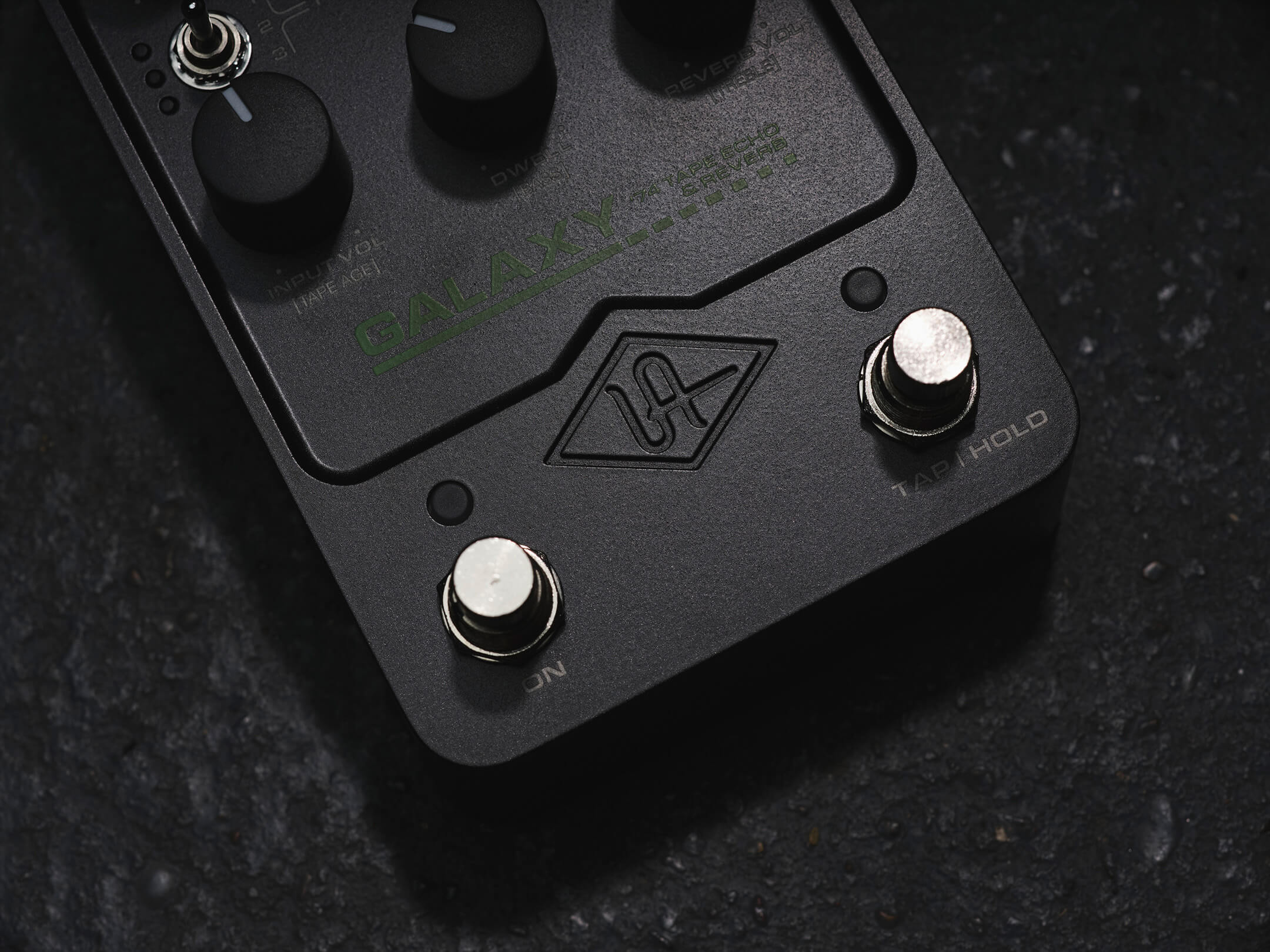Universal Audio Galaxy review: a meticulously modelled tape echo emulator
It’s inspired by the 1974 Roland Space Echo, but has this pedalboard-friendly multi-head delay with added reverb got it taped?

Review Overview
Our rating
8
Our verdict
The first generation of Universal Audio stompboxes were all about options. Those three pedals arrived in 2021 offering five kinds of modulation, four types of reverb and four very distinct delay algorithms. So perhaps the biggest surprise in the 2023 crop is that this unit, the Galaxy ’74 Tape Echo & Reverb, only sets out to emulate a single effect. Oh, but what an effect…
If you’ve ever owned a real Roland Space Echo, you’ll know just how great its multi-head delay sounds can be. You’ll also know that it’s the size of a microwave and twice as heavy, making this near-mythical piece of vintage kit a prime candidate for the modern digital treatment. The only snag for UA is that somebody else got there first – and not just anybody.
It was barely a year ago that Boss, arguably the biggest name in the world of guitar pedals and itself a subsidiary of the Roland Corporation, launched not one but two modern recreations of the RE-201 Space Echo: the three-footswitch RE-202 and the compact RE-2. The challenge for the Galaxy is that it’s more expensive than either of them, so to say it’d better be good is an understatement.
There are no presets on the three new UAFX stompers, so the control surfaces are pretty simple. In this case you get rate, feedback, output volume and input volume for the delay, plus dwell (input gain) and volume for the reverb – a digital emulation of the spring effect built into the RE-201. There’s a non-latching toggle switch that lets you flip through all seven possible combinations of three tape heads, and another switch to engage the ‘alt’ functions of the lower three knobs: tape age, echo bass and echo treble.

The second footswitch offers tap tempo, but can also be held down for what the manual calls ‘performance FX’. Can’t wait to find out what that means…
In Use
Given the piggybank-shattering prices, it’s no wonder the UAFX angle up to now has been impeccable audio quality. That’s a little harder to judge when the effect in question is slightly lo-fi by nature, but the Galaxy certainly picks up where the Starlight Echo Station left off.
Starting out in one of the single-head modes, with the reverb off and tape age at minimum, what comes out is so true to the Space Echo sound it’s almost weird. The repeats aren’t noticeably darker than the dry signal, just a teeny bit more ‘narrowband’, and with a hint of phasey colour to go with the subtle pitch modulation.
Adding a second head for overlapping repeats brings more pronounced phasing effects, while maxing out the tape age introduces more wobble and, every now and then, a seemingly random moment of pure wooziness. Get the alternative knob functions involved and you have complete control over every aspect of the delay sound. More power to tweak the reverb as well would have been nice, but at least its middly timbre is vintage-correct.

And that ‘performance FX’ feature? It’s a shortcut to the infamous snowballing self-oscillation effect otherwise achieved by cranking the feedback dial – just as realistic as the Boss RE-202’s warp mode, but more aggressive in its rush to get out of control. (If you’re not a fan of sonic snowballs, note that you can use the UAFX Control app to change the function of the second footswitch to a separate bypass for the reverb.)
So, does the Galaxy’s audio purity lift it clear of its rivals? To be honest, the margins involved are so fine as to make little difference in the real world. But this pedal does have some unique selling points – not least how strangely lovely it sounds in stereo, despite the lack of any left/right head-splitting options, and how it fits all the features you really need into a small and simple unit.
KEY FEATURES
- PRICE £325
- DESCRIPTION Digital stereo tape delay emulator pedal, made in Malaysia
- CONTROLS Echo rate, feedback, volume and input/age; reverb dwell/bass and volume/treble; non-latching delay head switch (7 combinations); bypass and tap/hold footswitches
- FEATURES Mono/stereo inputs and outputs, USB-C for firmware updates, Bluetooth for app control; buffered bypass, powered by 9-volt mains supply only (minimum 400mA)
- DIMENSIONS 148 x 92 x 62mm
- CONTACT uaudio.com
LIKE THESE? TRY THESE…
- Boss RE-202 £299
- Boss RE-2 £199
- Strymon El Capistan V2 £359
